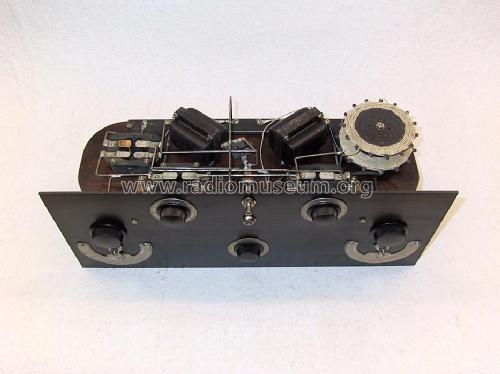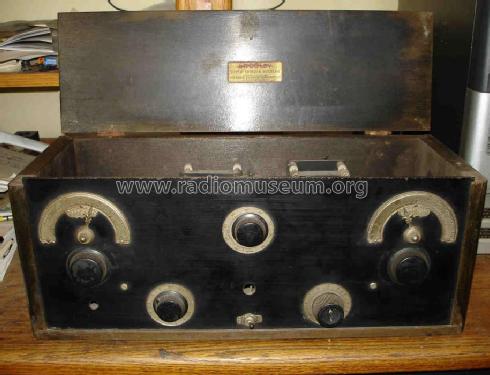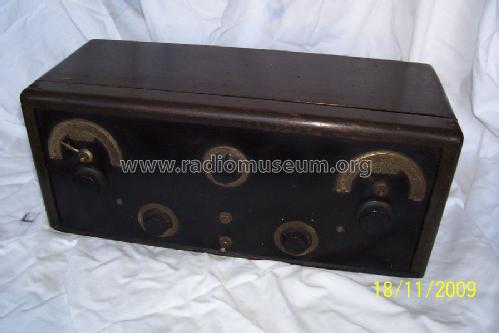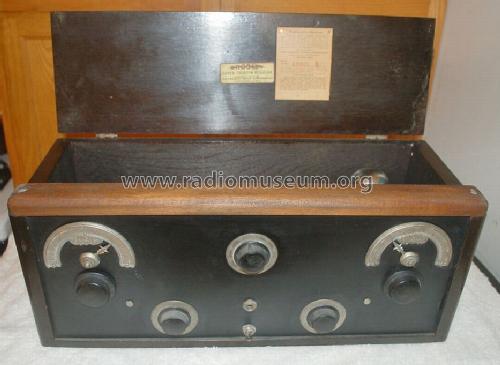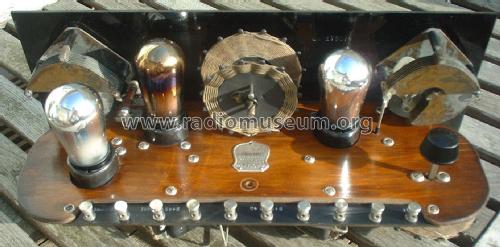Super Trirdyn Regular
Crosley Radio Corp.; Cincinnati (OH)
- Country
- United States of America (USA)
- Manufacturer / Brand
- Crosley Radio Corp.; Cincinnati (OH)
- Year
- 1925
- Category
- Broadcast Receiver - or past WW2 Tuner
- Radiomuseum.org ID
- 36637
Click on the schematic thumbnail to request the schematic as a free document.
- Number of Tubes
- 3
- Main principle
- TRF with regeneration; Reflex
- Tuned circuits
- 2 AM circuit(s)
- Wave bands
- Broadcast only (MW).
- Power type and voltage
- Storage and/or dry batteries
- Loudspeaker
- - This model requires external speaker(s).
- Material
- Wooden case
- from Radiomuseum.org
- Model: Super Trirdyn Regular - Crosley Radio Corp.;
- Shape
- Tablemodel, Box - most often with Lid (NOT slant panel).
- Dimensions (WHD)
- 18 x 7.5 x 8 inch / 457 x 191 x 203 mm
- Notes
-
Two dials (primary tuning control knobs). See also Trirdyn regular.
- Price in first year of sale
- 50.00 $
- External source of data
- Ernst Erb
- Source of data
- Radio Collector`s Guide 1921-1932
- Circuit diagram reference
- Rider's Perpetual, Volume 1 = 1931/1934 (for 1919-1931)
- Mentioned in
- Radio Manufacturers of the 1920s, Vol 1
- Literature/Schematics (1)
- Collector's Guide to Antique Radios (6th edition)
- Other Models
-
Here you find 1829 models, 1054 with images and 1323 with schematics for wireless sets etc. In French: TSF for Télégraphie sans fil.
All listed radios etc. from Crosley Radio Corp.; Cincinnati (OH)
Collections
The model Super Trirdyn is part of the collections of the following members.
Museums
The model Super Trirdyn can be seen in the following museums.
Forum contributions about this model: Crosley Radio Corp.;: Super Trirdyn Regular
Threads: 2 | Posts: 6
The inside escutcheon says "Three tubes do the work of five", but there is only one reflexed stage: the first tube is on double duty, while the second is an audion detector and the third one is the output tube...
Strange, isn't it ?
Konrad Birkner † 12.08.2014, 19.Jul.09
Advertisement in "Radio Digest" Vol.XV No.6 of November 14th, 1925:

Georg Richter, 12.Jan.14









